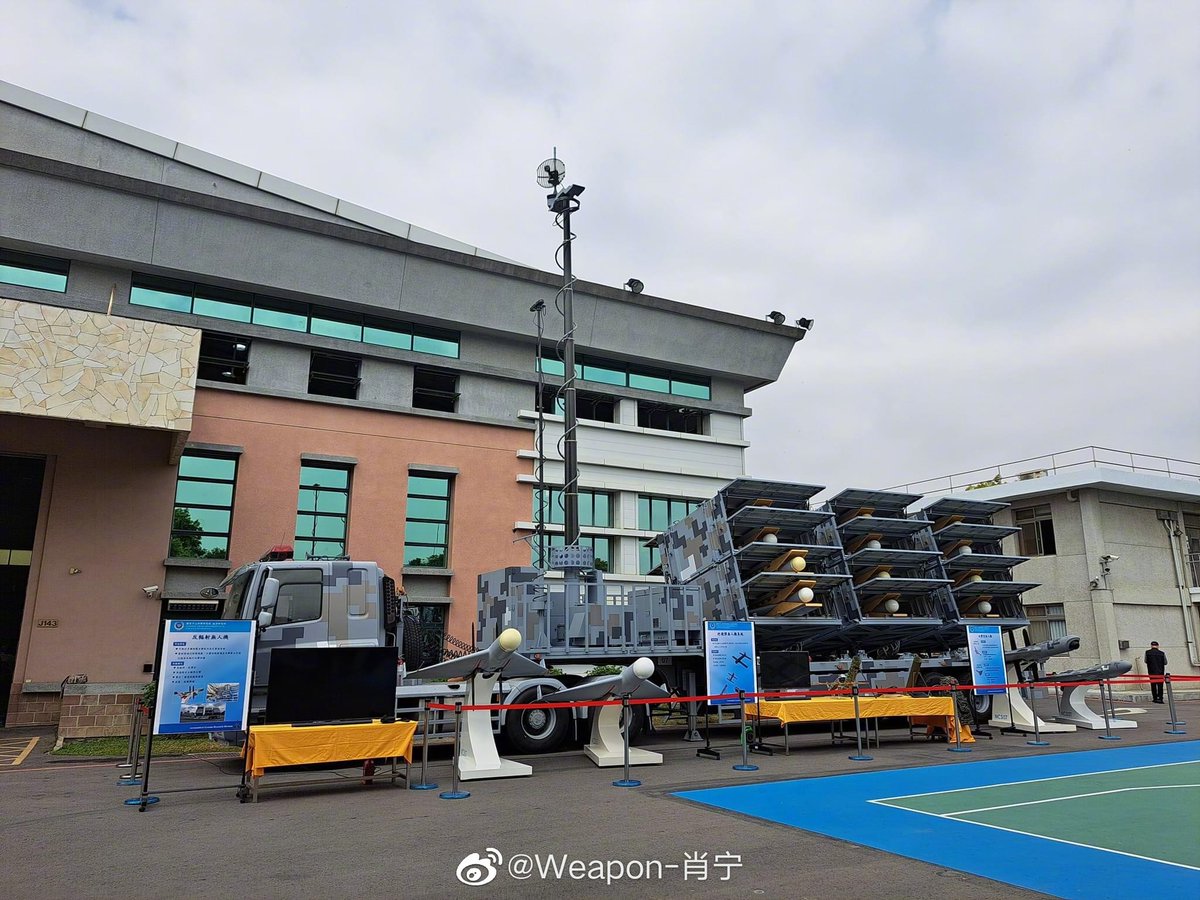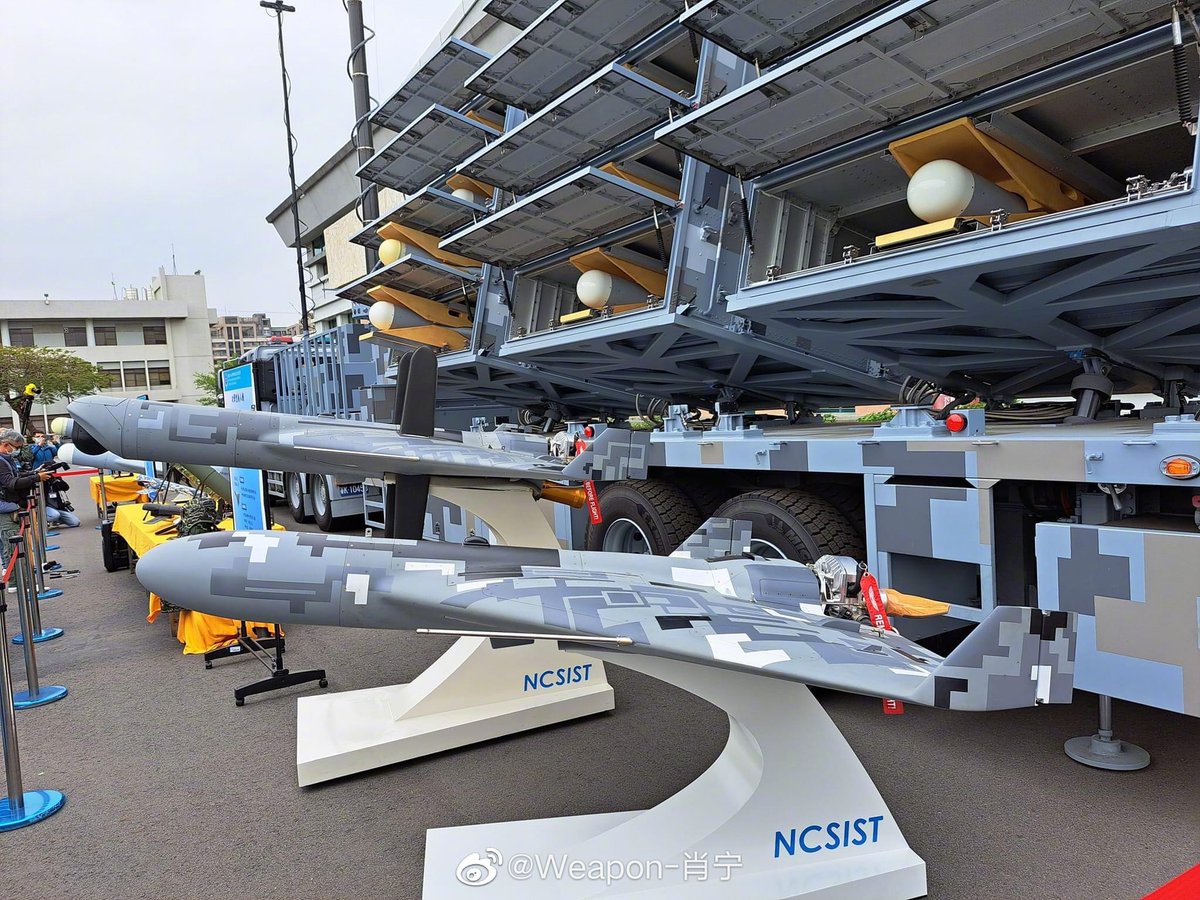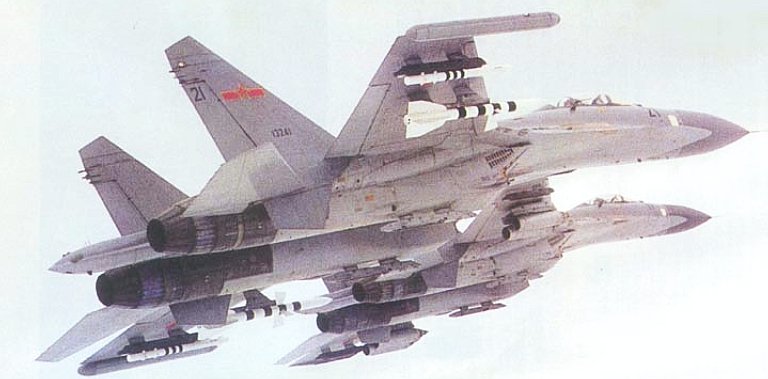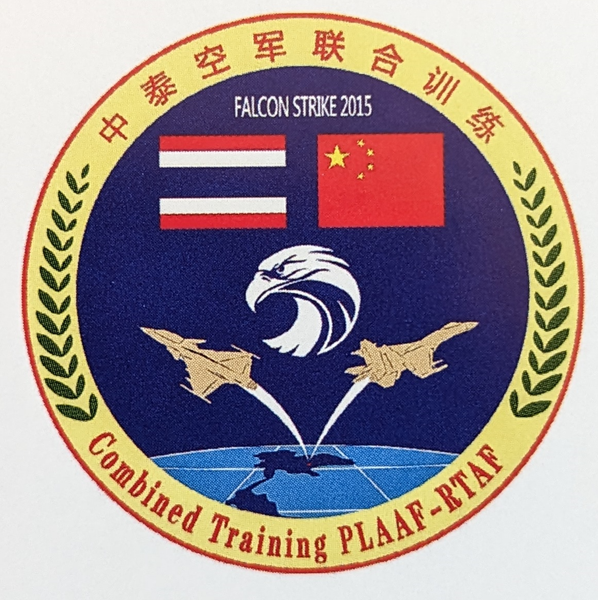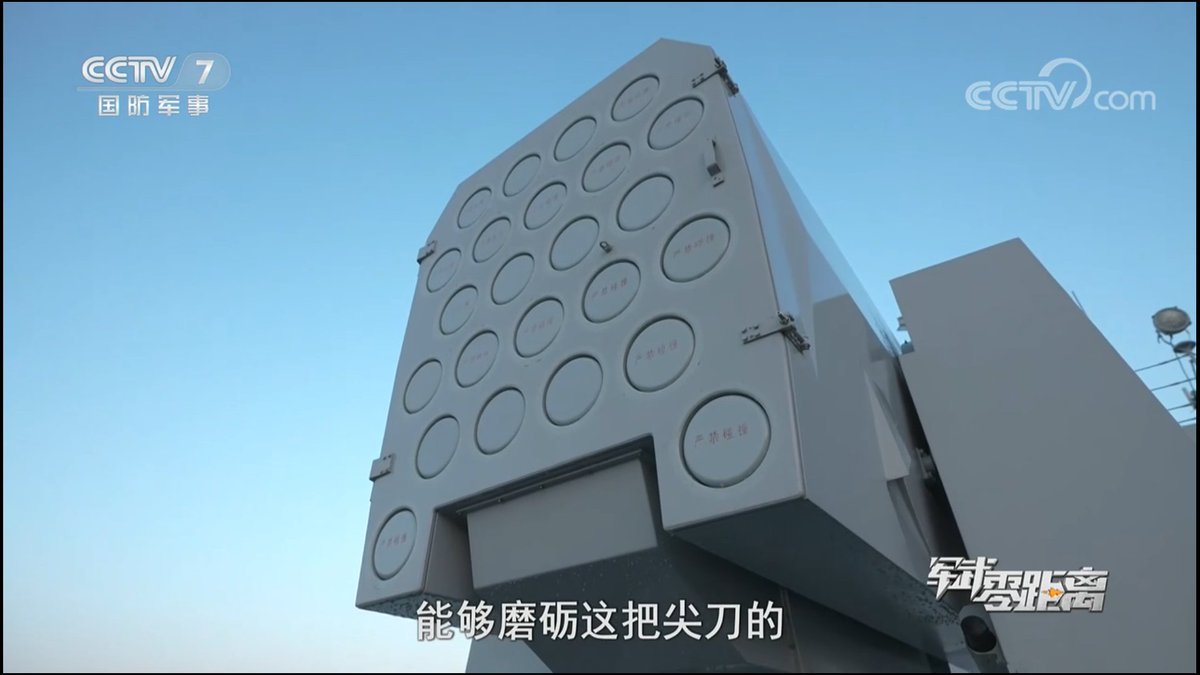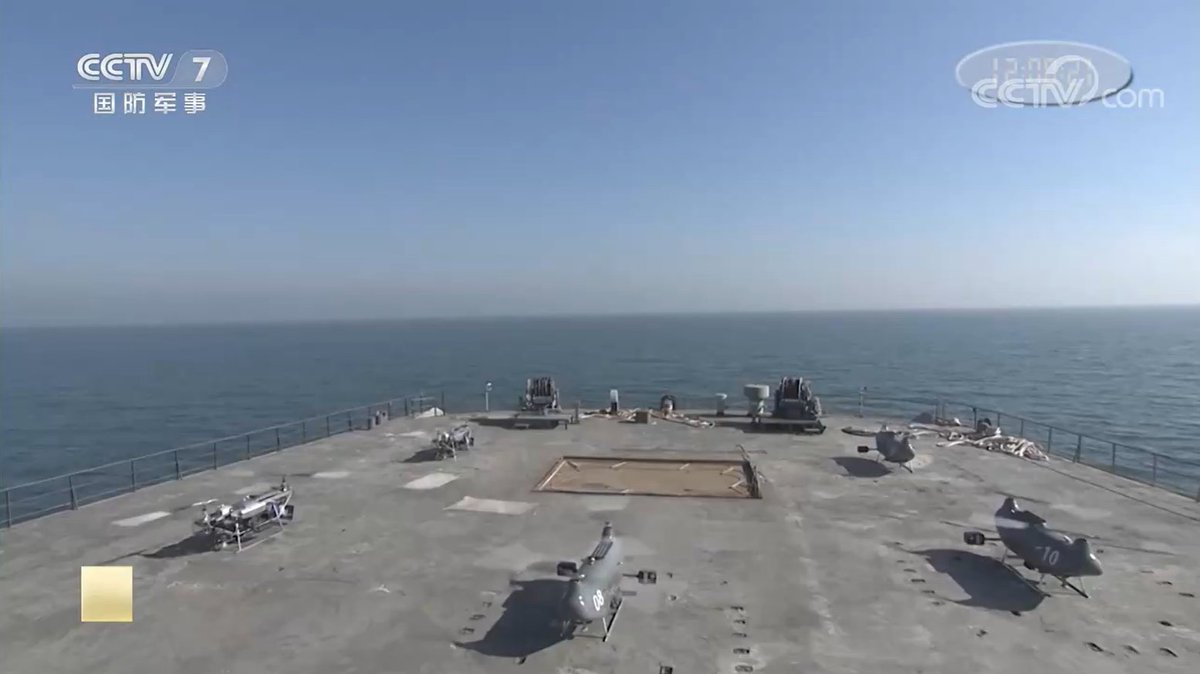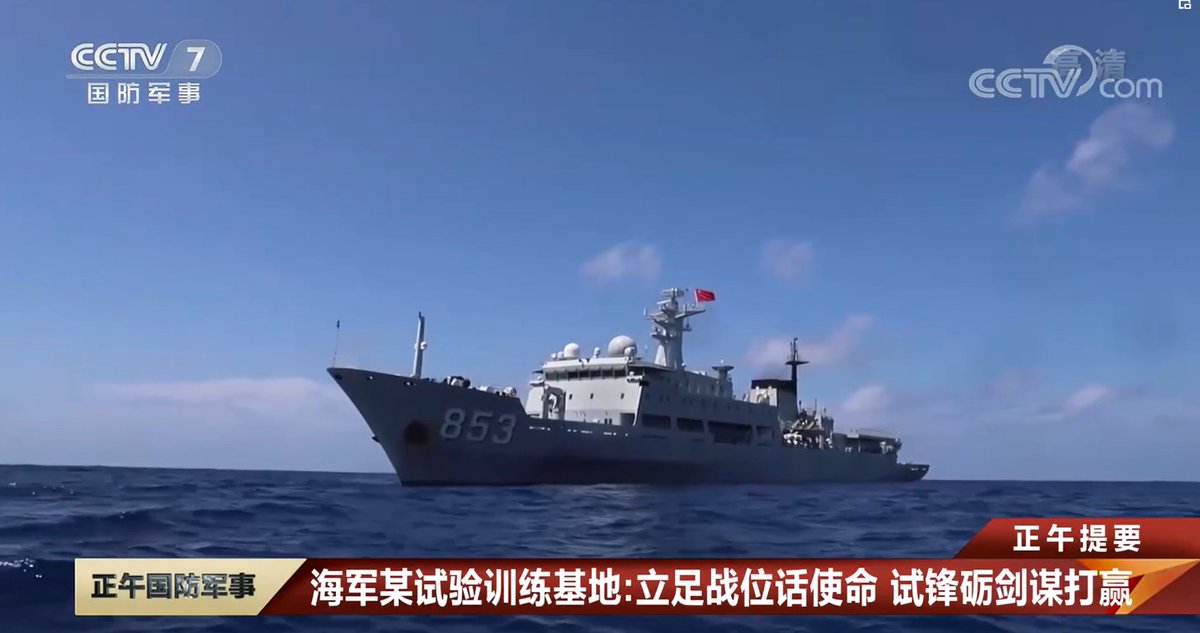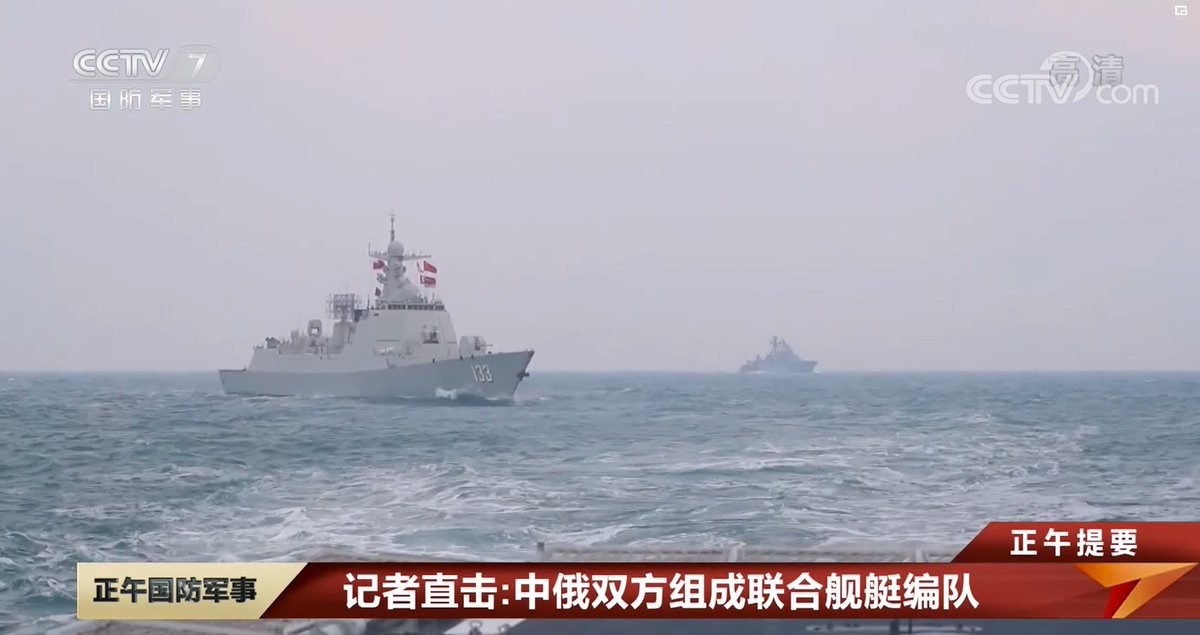1/16 THREAD🧵
Yesterday, CCTV7 showed a short urban exercise of a 🇨🇳PLA unit.
The event took place in Dongshi Village Training Grounds, Jiangsu (34.4609, 118.4942).
It shows a 160th Heavy Combined Bde urban assault (71st Group Army, Eastern TC)




Yesterday, CCTV7 showed a short urban exercise of a 🇨🇳PLA unit.
The event took place in Dongshi Village Training Grounds, Jiangsu (34.4609, 118.4942).
It shows a 160th Heavy Combined Bde urban assault (71st Group Army, Eastern TC)
https://twitter.com/JosephWen___/status/1642202576161771520




2/16
The assault consisted in a small section/platoon-size infantry unit supported by a ZBD-86 IFV and other assets such as sUAV and recon support.
As per usual in the PLA, mock obstacles are used in the main access routes, but are cleared out before reaching them.



The assault consisted in a small section/platoon-size infantry unit supported by a ZBD-86 IFV and other assets such as sUAV and recon support.
As per usual in the PLA, mock obstacles are used in the main access routes, but are cleared out before reaching them.




3/16
Obstacles seems to be more present this time than in previous occasions, which is a novelty since they normally are inexistent.
Real obstacles such as debris, vehicles and rubble are present outside and inside the buildings.



Obstacles seems to be more present this time than in previous occasions, which is a novelty since they normally are inexistent.
Real obstacles such as debris, vehicles and rubble are present outside and inside the buildings.

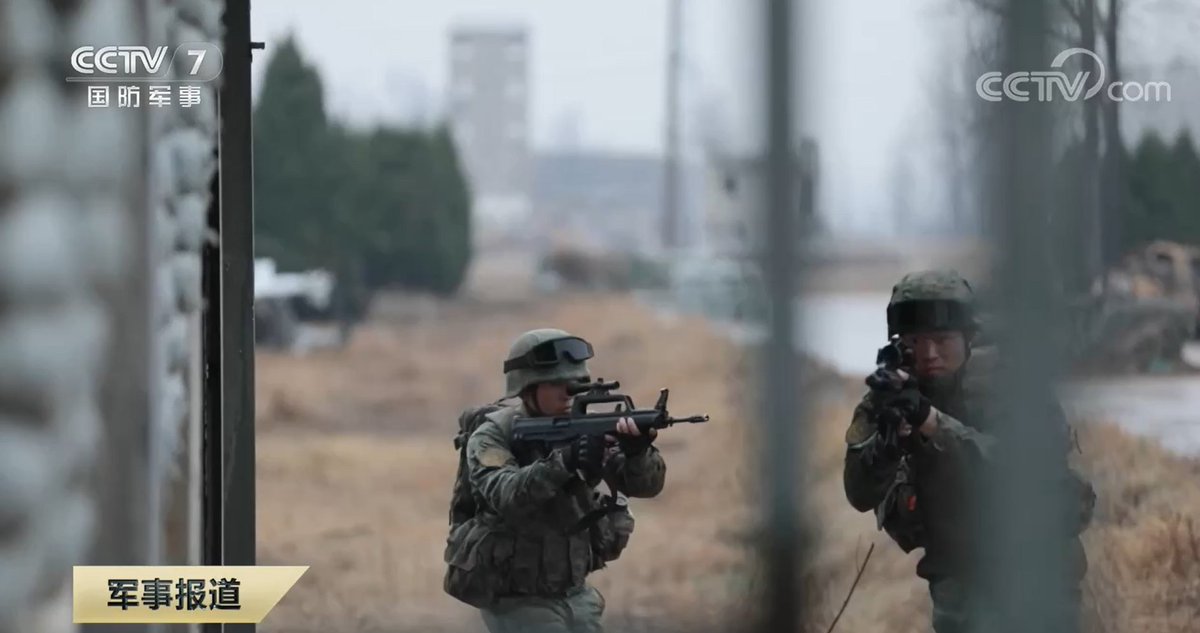
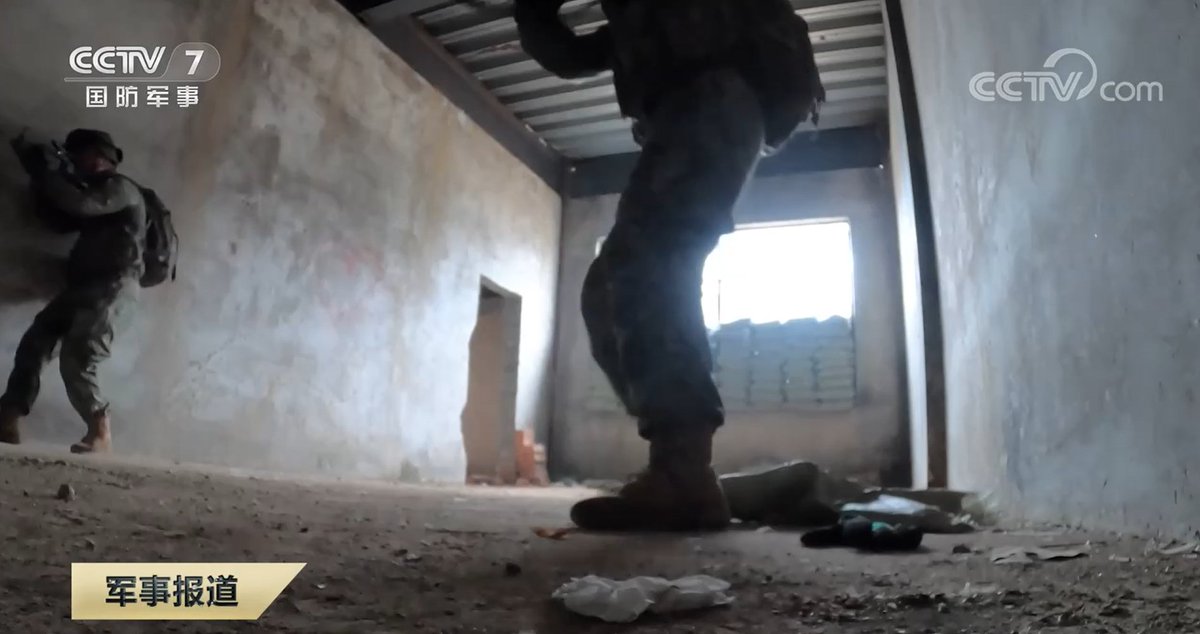
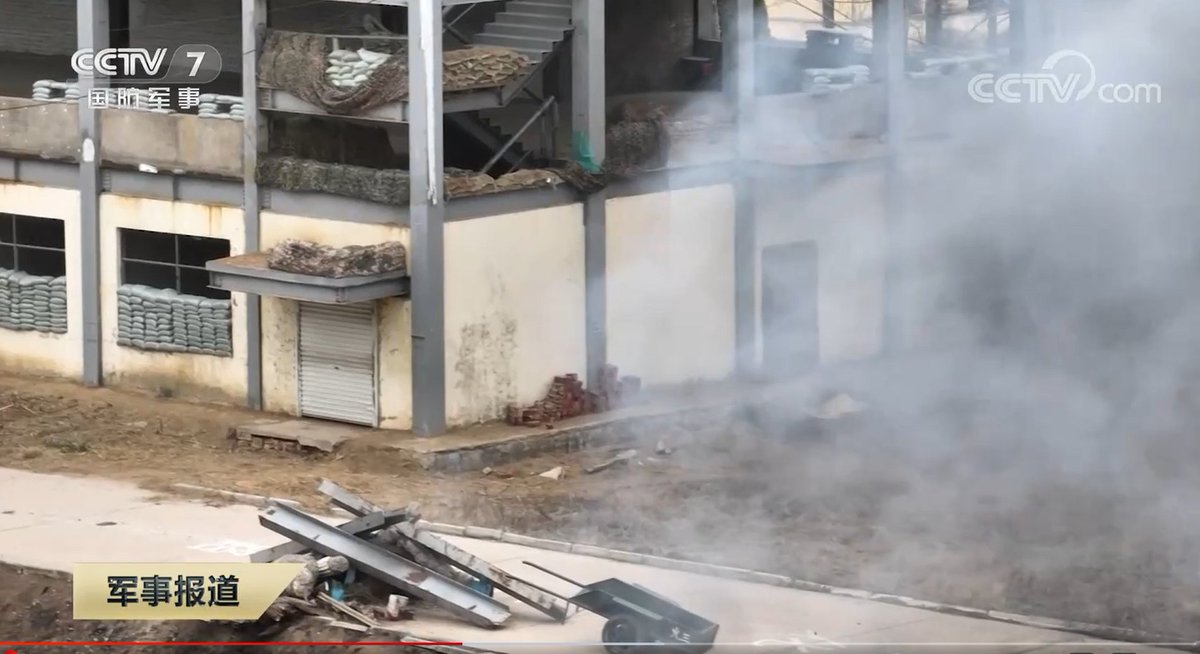
4/16
Although the 160Heavy CA Bde has ZTZ-96 tanks, the assault was done with a ZBD-86, which is suboptimal. Infantry was used to protect the vehicle forward, behind and along the flanks.
This probably shows the limited heavy vehicles support available in a potential...



Although the 160Heavy CA Bde has ZTZ-96 tanks, the assault was done with a ZBD-86, which is suboptimal. Infantry was used to protect the vehicle forward, behind and along the flanks.
This probably shows the limited heavy vehicles support available in a potential...




5/16
…invasion of Taiwan🇹🇼.
Squad advance. Pairs of infantry soldiers can be seen advancing (also in pairs) covering each other.
Squads also seem to be covering each other & the IFV advance in pairs.
The advance is done through a funnelled point, which is highly discouraged.



…invasion of Taiwan🇹🇼.
Squad advance. Pairs of infantry soldiers can be seen advancing (also in pairs) covering each other.
Squads also seem to be covering each other & the IFV advance in pairs.
The advance is done through a funnelled point, which is highly discouraged.




6/16
Some of the soldiers are seen advancing through the building, using the Ground floor windows for advance & covering the advance from the First floor windows.
This type of advance without clearing the building first is highly complicated,unlikely&don't reflect realistic TTPs
Some of the soldiers are seen advancing through the building, using the Ground floor windows for advance & covering the advance from the First floor windows.
This type of advance without clearing the building first is highly complicated,unlikely&don't reflect realistic TTPs

7/16
The squads advanced covering different angles and the 3 dimensions (up, down, sides, upfront, etc)
They also advance slightly separated from the walls, which is standard practice, but still bunched up.
It seems this has been practiced as it is less visible previously.



The squads advanced covering different angles and the 3 dimensions (up, down, sides, upfront, etc)
They also advance slightly separated from the walls, which is standard practice, but still bunched up.
It seems this has been practiced as it is less visible previously.




8/16
When they advance inside buildings, the unit seems to be training building clearance TTPs advancing in pairs covering each other.
We can see a fair amount of debris in this staircase.


When they advance inside buildings, the unit seems to be training building clearance TTPs advancing in pairs covering each other.
We can see a fair amount of debris in this staircase.



9/16
The advance is also covered, not only by the vehicle & infantry, but also by AT weapons.
There are 2 AT soldiers carrying them covering the advance in pairs.
In the PLA, AT weapons are used to destroy fortified positions or strong points to allow quick advance.

The advance is also covered, not only by the vehicle & infantry, but also by AT weapons.
There are 2 AT soldiers carrying them covering the advance in pairs.
In the PLA, AT weapons are used to destroy fortified positions or strong points to allow quick advance.


10/16
Although generally missing, different assault gun sights can be seen in this exercise. Seem to be allocated to specialized soldiers covering the advance.
High ratio of assault gun mounted grenade launchers are seen during the assault to favour a speedy assault.

Although generally missing, different assault gun sights can be seen in this exercise. Seem to be allocated to specialized soldiers covering the advance.
High ratio of assault gun mounted grenade launchers are seen during the assault to favour a speedy assault.


11/16
A sUAV is used as a recon tool, not specified if before, during or after the assault.
The sUAV team is formed by 1 single operator, which is suboptimal.
The number of sUAV (only 1) seems rather insufficient giving the environment recon limitations & assault scale.



A sUAV is used as a recon tool, not specified if before, during or after the assault.
The sUAV team is formed by 1 single operator, which is suboptimal.
The number of sUAV (only 1) seems rather insufficient giving the environment recon limitations & assault scale.
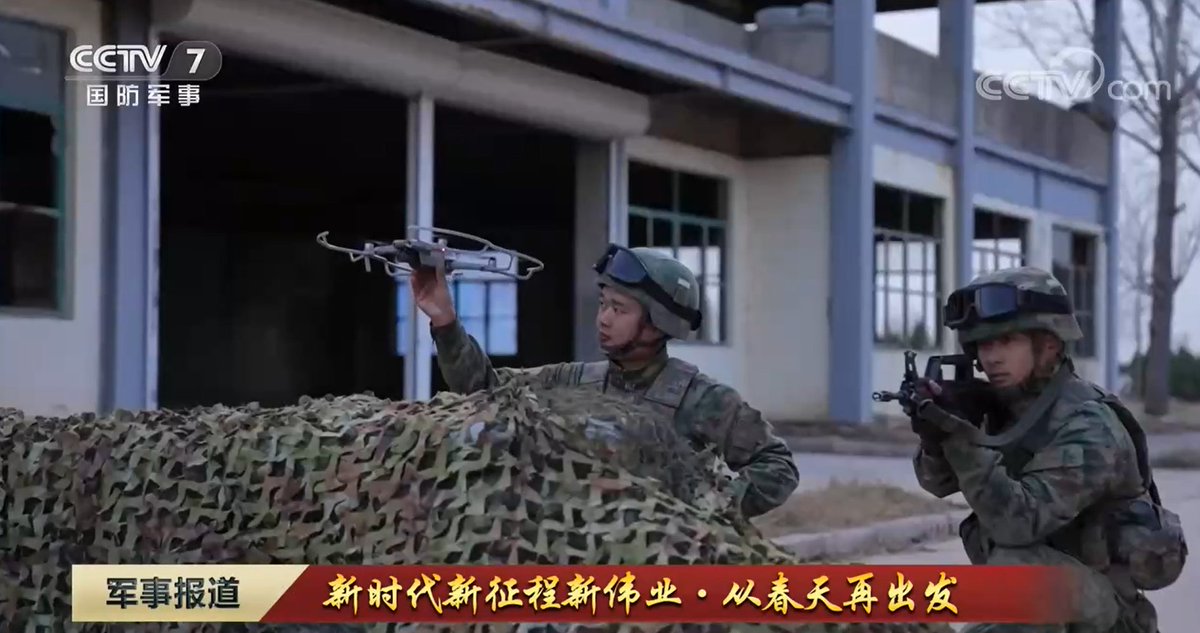



12/16
Radio communications were practice from within the urban area and from within buildings to infantry units outside the built-up area, acting as relay.
Further reconnaissance support is requested from a nearby armoured recon unit, equipped with a mast sensor.



Radio communications were practice from within the urban area and from within buildings to infantry units outside the built-up area, acting as relay.
Further reconnaissance support is requested from a nearby armoured recon unit, equipped with a mast sensor.




13/16
This extra reconnaissance support is achieved by an armoured vehicle equipped with a sensor mast.
This is a practice we have seen many times before in urban environments inthe PLA.



This extra reconnaissance support is achieved by an armoured vehicle equipped with a sensor mast.
This is a practice we have seen many times before in urban environments inthe PLA.
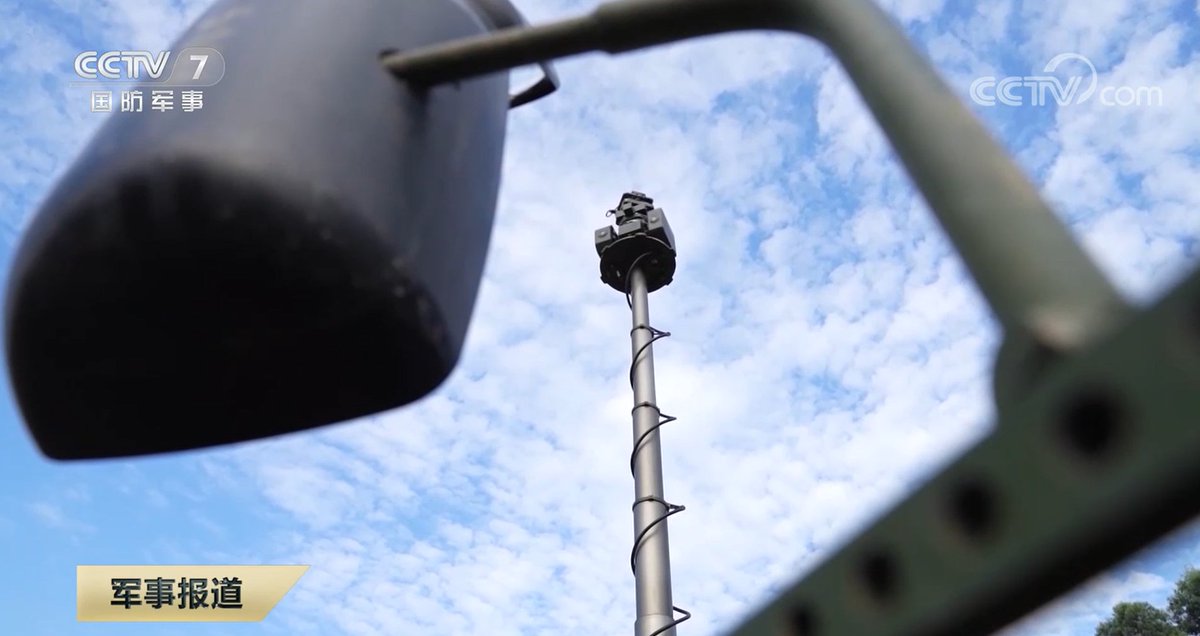
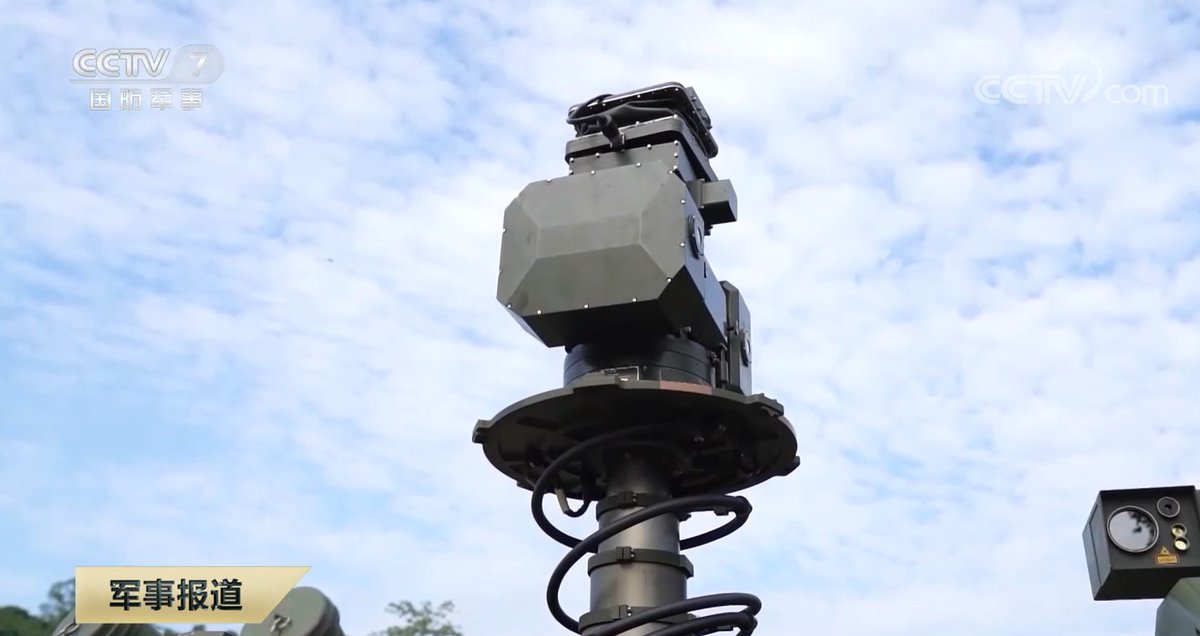


14/16
A 3D cartographic tool is shown, but lacking any Battlefield Management System (BMS) or C&C feature.
This seems to be lagging behind of the digital BMS seen in Ukraine and shows that previously seen PLA BMS PLA tools are still not operational or shown



A 3D cartographic tool is shown, but lacking any Battlefield Management System (BMS) or C&C feature.
This seems to be lagging behind of the digital BMS seen in Ukraine and shows that previously seen PLA BMS PLA tools are still not operational or shown




15/16
A couple of interesting details.
The initial frames, shows an empty observation tower to follow and assess the training exercise performance.
Also, some (empty) AT launcher boxes can be seen stocked in areas as part of the decoration, maybe simulating AT positions.


A couple of interesting details.
The initial frames, shows an empty observation tower to follow and assess the training exercise performance.
Also, some (empty) AT launcher boxes can be seen stocked in areas as part of the decoration, maybe simulating AT positions.



16/16
Smoke is used during the assault, but it seems to create a performance effect rather than to cover the assault.
/END
Video:
https://tv.cctv .com/2023/04/01/VIDEwQN1a8Gd4xeSlFYXqW55230401.shtml?spm=C52346.PiumOrlYLNUM.E0VXtwLj8YU7.3



Smoke is used during the assault, but it seems to create a performance effect rather than to cover the assault.
/END
Video:
https://tv.cctv .com/2023/04/01/VIDEwQN1a8Gd4xeSlFYXqW55230401.shtml?spm=C52346.PiumOrlYLNUM.E0VXtwLj8YU7.3




• • •
Missing some Tweet in this thread? You can try to
force a refresh

 Read on Twitter
Read on Twitter

